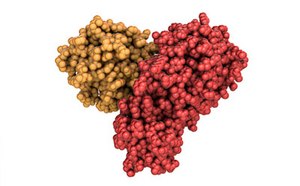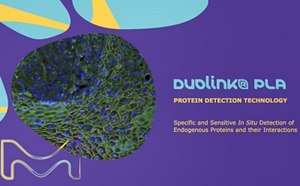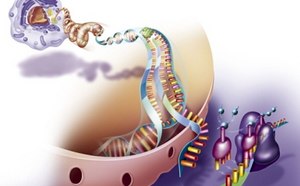Targeted Protein Degradation

Testing on April 23, 2025
Targeted protein degradation (TPD) is a novel drug discovery strategy that eradicates problem proteins from cells by hijacking cellular degradation processes with small molecules. One of these processes is the ubiquitin-proteasome pathway, an intracellular quality control mechanism that utilizes E3 ubiquitin ligases and associated partners to seek out damaged or misfolded proteins for degradation via the proteasome or “cellular trash can.” Proteolysis-targeting chimeras (PROTAC® degraders) are heterobifunctional molecules containing a disease target warhead and E3 ligase ligand tethered together by a linker.
When added to cells, they recruit the target protein to the E3 ligase, hijacking the native degradation pathway to remove the disease target. This protein silencing approach delivers phenotypes that have been called the chemical equivalent to CRISPR – yet with small-molecule control.
Featured Categories
Protease reagents and resources for endo- and exopeptidase cleavage application needs and resources for your protein cleavage workflow.
Duolink® Proximity Ligation Assay (PLA) technology for detecting and quantifying protein-protein interactions.
Pathogen testing is a key component and critical success factor in effective food safety and process control programs.
We have a comprehensive offering of high-purity amino acids and derivatives important to metabolomic pathways...
PROTAC®-mediated degradation of a target provides many advantages to traditional occupancy-based inhibition by small molecules. Degraders developed from leads, warheads, or inhibitors demonstrate improved cellular responses and target selectivity. As the degrader is not eliminated alongside the target, it is recycled, operating catalytically at lower doses. Lastly, where ~80% of protein targets have been deemed intractable to traditional small molecules due to a lack of defined binding cavities or active sites (“undruggables”), lower affinity binders have been successfully developed into successful degraders by their ability to recruit diverse targets to an E3 ligase. Due in part to these reasons, protein degraders have been identified as new modalities in drug discovery and hold a promising future as research tools.
As protein degraders interact with both a target protein and E3 ligase simultaneously, their design is not trivial. A modular approach is often taken to generate PROTAC® libraries to screen for degradation of target proteins. To do this, strategic permutations of E3 ligands, target warheads, and linkers are synthesized with growing attention to linker properties and exit vectors. Each member of the target-specific degrader library is analyzed for depletion of the target in cells, providing leads for further optimization and characterization.
PROTAC® is a registered trademark of Arvinas Operations, Inc., and is used under license.
Visit our document search for data sheets, certificates and technical documentation.
Related Articles
- Protein Degrader Building Blocks are a collection of crosslinker-E3 ligand conjugates with a pendant functional group for covalent linkage to a target ligand.
- Targeted protein degradation (TPD) is an emerging strategy that uses small molecules to hijack endogenous proteolysis systems to degrade disease-relevant proteins and thus reduce their abundance in cells.
- Prekatalizatory Buchwald G6 to utleniające kompleksy addycyjne, które są stabilne termicznie, odporne na powietrze i wilgoć. Aktywacja katalizatora nie wymaga zasady i generuje nieszkodliwe produkty uboczne.
- Ligandy YPhos umożliwiają katalizowane palladem reakcje sprzęgania z chlorkami arylowymi w łagodnych warunkach, dając bogate w elektrony ylidy.
- See All (20)
Related Protocols
- Highly characterized cryopreserved human colonic organoids and a step-by-step organoid culture protocol for epithelial intestinal organoid differentiation from iPS cells.
- Przyleganie komórek do stałych podłoży za pomocą poli-lizyny, która wzmacnia elektrostatyczne oddziaływanie między ujemnie naładowanymi jonami błony komórkowej a powierzchnią hodowli.
- Ten protokół powlekania żelatyną do zastosowań w hodowli komórkowej zawiera informacje dotyczące rodzajów żelatyny, stężenia pokrycia powierzchni i wskazówki dotyczące optymalizacji.
- Coating surfaces with laminin for culturing cells requires specific conditions for optimal results. Protocols for coating coverslips to culture neurospheres and general cell culture are included.
- See All (1)
Find More Articles and Protocols
How Can We Help
In case of any questions, please submit a customer support request
or talk to our customer service team:
Email custserv@sial.com
or call +1 (800) 244-1173
Additional Support
- Chromatogram Search
Use the Chromatogram Search to identify unknown compounds in your sample.
- Kalkulatory i aplikacje
Web Toolbox - narzędzia naukowe i zasoby dla chemii analitycznej, nauk przyrodniczych, syntezy chemicznej i materiałoznawstwa.
- Customer Support Request
Obsługa klienta, w tym pomoc przy zamówieniach, produktach, kontach i kwestiach technicznych związanych z witryną.
- FAQ
Explore our Frequently Asked Questions for answers to commonly asked questions about our products and services.
Zaloguj się lub utwórz konto, aby kontynuować.
Nie masz konta użytkownika?



